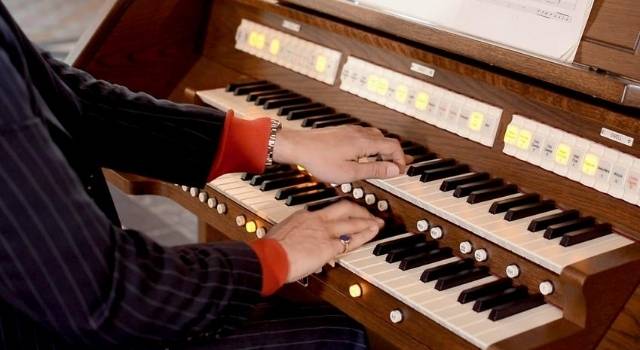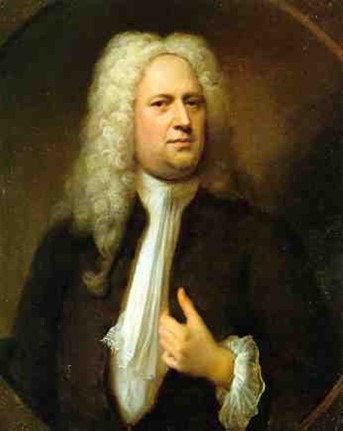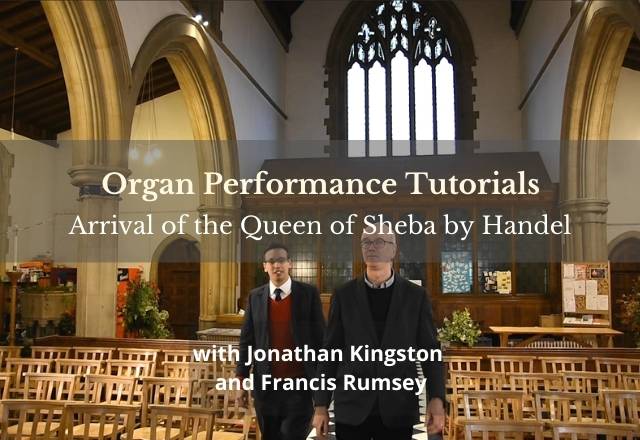The fourth piece in this year’s organ performance tutorial series is Arrival of the Queen of Sheba, written by England’s arguably greatest German import, George Frederick Handel. Jonathan Kingston and Francis Rumsey discuss what one might do with it on the organ, as it’s often asked for at weddings.
The Queen of Sheba herself is the subject of much historical conjecture, having apparently arrived at the court of King Solomon from the kingdom of Saba (Sheba) bearing rich gifts. It’s not totally clear whether she and Solomon actually married, but there were rumoured goings-on, and various debates about whether she had hairy legs or not.
Arrival of the Queen of Sheba
The piece was originally an orchestral sinfonia from the oratorio Solomon, so to render it on the organ one should probably be aiming for something of the sound of bright string figurations and woodwind contrasts. That suggests the need to register two contrasting manuals up to at least two-foot (fifteenth) flue stops, with a reasonably distinct pedal line to bring out the bass rhythm.
As you see, Jonathan manages quite a lot of the performance with the bright right-hand semiquavers on the Great manual, accompanied by chords on the slightly less prominent Swell.
The Swell has the oboe stop added to emphasise the woodwind element of the accompaniment. It also enables a nice contrast of timbre between the hands in the interspersed semiquaver phrases that are played in thirds. These really need to be split between the hands to give the player an easier time of it.

The speed at which to play this piece is important
It’s very hard to play this piece without pedals, as it’s the pedal line that keeps the steady bass accompaniment going, and the piece misses something essential without it chugging along underneath. This is also what can help to keep the tempo steady, as it’s only too easy for the speed to increase gradually throughout the performance.

If one is not careful, by the end of the movement the speed can have risen one or two notches and what was manageable has become less so. It’s really important, therefore, not to take off too fast with this piece, and to practice it with a metronome.
Super high speeds are not necessary to make most baroque pieces shine — the relentless drive, semiquaver movement, and consistent pulse can be exciting without needing to race along.
Another thing that’s important for a successful performance is to have one’s page turns figured out, as there is little let up in the semiquavers, and few good places to turn.
A page turner can be very helpful here, or at least a few copied pages.
Playing Arrival of the Queen of Sheba at a wedding?
If the bride wants this at the entrance of the wedding then the piece can usefully be wrapped up after the first couple of pages, if she’s reached the front by then.
If she wants it at the end then you’ll have to learn the whole thing and be much more disciplined about your speed control!
(Looking for more ideas on music to play during a wedding? Then look at these suggestions for organ music for a wedding.)

I’m a retired academic, with a background in music and audio engineering. I’m currently a consultant for Viscount & Regent Classic Organs, as well as being a freelance organist, including a role as organist/choirmaster at St Mary’s, Witney. I sing bass with Oxford Pro Musica Singers and the Cathedral Singers of Christ Church, Oxford.




What arrangement/edition was used for the demonstration?
It is from Oxford University Press (OUP) arr. E W Maynard.